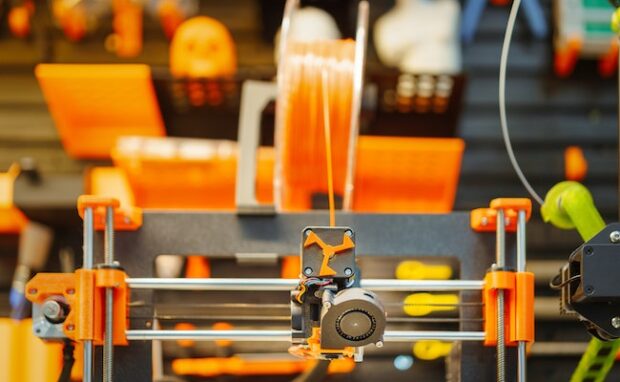AI 3D printing program helps personalize models
Printing 3D models has become more affordable and accessible, enabling many to start personalized projects. That is why many beginners download ready-made models on free, open-source repositories. However, customizing them can be difficult for first-timers. That is why MIT researchers created an AI 3D printing software called Style2Fab.
This artificial intelligence program could unlock the wonders of 3D printing for everyone worldwide. It could make it easier for novice designers to create fun knick-knacks like keychains and figurines. Also, the software could have more important functions, such as helping medical staff create medical devices tailor-made for patients.
This article will discuss how the AI 3D printing tool works. Later, I will briefly discuss 3D printing for readers who have never tried this technology before.
How does the AI 3D printing program work?
Faraz Faruqi, a Massachusetts Institute of Technology computer science graduate, realized 3D printing has become more accessible. Unfortunately, customizing models was a steep learning curve for beginners.
You can modify 3D models without the MIT program, but it can be difficult. You would need expensive computer-aided design (CAD) software. Those are like Adobe Photoshop but more complex due to its comprehensive features.
It’s even harder if the original representation of the model is not available online. Also, adding personalized elements to an object can affect its functionality.
Most beginners don’t have enough expertise to optimize customizations. That is why Faraz Faruqi created his AI 3D printing software. “Style2Fab would make it very easy to stylize and print a 3D model, but also experiment and learn while doing it.”
The software uses deep-learning algorithms that divide a 3D model into aesthetic and functional segments. Faruqi and his colleagues started the project by studying objects in free online repositories like Thingiverse.
That enabled them to understand the decorative and functional parts of 3D models. “We quickly saw that the purpose of a 3D model is very context-dependent, like a vase that could be sitting flat on a table or hung from the ceiling with string.”
You may also like: How to use ChatGPT customized instructions
“So it can’t just be an AI that decides which part of the object is functional. We need a human in the loop,” he added. That is why the researchers designed the AI 3D printing model to compare parts of a user model with its samples.
If a segment closely matches one of those pieces, it is marked functional. As a result, it enables novices to customize existing 3D assets significantly easier.
More importantly, Style2Fab can help doctors alter medical devices without sacrificing functionality. For example, they could alter a thumb splint to blend with clothing.
What is 3D printing?
Some may have never seen 3D printing before. It involves a machine that layers plastic until it creates specific shapes. The printing machines have hanging nozzles that pour molten plastic onto their surfaces.
Most folks use it to create miniature figures like keychains or paperweights. Others use it to create costumes and props faster and easier. However, it has more important purposes:
You may also like: 3D printing heart tissue
- Aerospace: This technology enables engineers to fabricate parts faster and cheaper. Also, 3D printing lets them create lighter versions of airplane parts while avoiding waste.
- Automotive: Car manufacturers can use 3D printing to create replacement parts quickly, similar to airplane engineers. This feature is especially important for luxury cars because each one is tailor-made for their owners.
- Medical: As mentioned, medical professionals can use AI 3D printing to create personalized patient devices. Moreover, dentists use it to create bite splints and crowns that perfectly fit patients.
- Consumer goods: Companies use 3D printing to make prototypes of upcoming products cheaply. As a result, they can significantly cut development costs.
- Education: Teachers could make miniature replicas of large objects to help students understand how they function. For example, you could 3D print an orbital satellite to illustrate how it works.
Conclusion
An MIT student created an AI 3D printing that makes it easier to modify existing 3D printing. As a result, first-timers can quickly start their 3D fabrication hobby.
More importantly, it can become essential for various sectors like healthcare. Doctors could use it to modify medical devices to suit specific patients.
Get more details regarding this unique software on the HCI Engineering website. Learn more about the latest digital tips and trends at Inquirer Tech.
